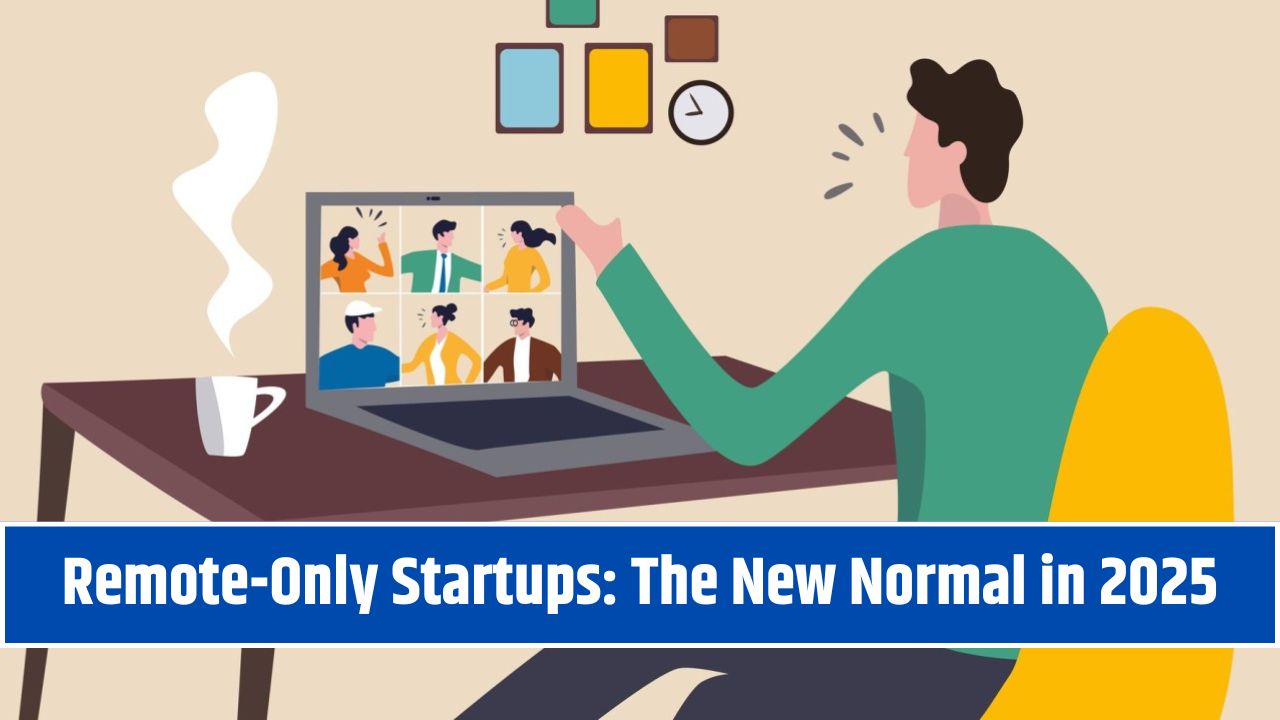So let’s be real for a sec:
Who actually misses commuting, cubicles, and crusty break room coffee?
No one. That’s who.
It’s 2025. And the startup world?
It’s remote-first, remote-smart, and in many cases, remote-only. Not as a survival move, not as a “COVID flashback,” but as a fully intentional, strategic way of building lean, resilient, global-first companies.
Remote-only startups aren’t just surviving.
They’re thriving — raising capital, scaling teams, and disrupting industries from dining rooms, co-working hubs, and Airbnbs in Portugal.
So let’s unpack this shift. Why is remote-only now the default? What are the pros, the pitfalls, and the productivity secrets behind these WiFi-fueled businesses?
Whether you’re a founder, operator, team lead, or just considering launching something from your laptop — this one’s for you.
Why Remote-Only Is Now the Default (Not the “Backup Plan”)
Back in the early 2020s, remote work was a pivot. An emergency response.
Fast forward to now, and it’s a core business model.
Why? Because it makes sense.
1. Lower Costs, Higher Flexibility
No rent. No utilities. No office furniture bills.
Remote startups can invest that capital into actual growth: product, people, and customer experience.
2. Global Talent, Not Just Local Luck
When your hiring pool includes the entire planet, you’re not limited to who’s within a 20-mile radius of your HQ.
Remote startups can hire a designer in Buenos Aires, a growth hacker in Berlin, and a developer in Nairobi — all in the same week.
3. Async Culture = Deep Work Wins
Remote startups lean hard into asynchronous communication — meaning fewer meetings, more autonomy, and uninterrupted time to actually do the work.
4. Happier Teams = Lower Burnout
Work-from-anywhere flexibility boosts mental health, reduces stress, and helps people design lives that actually feel human.
How Today’s Remote-Only Startups Are Built (Step-by-Step)
Let’s break down what a 2025 remote-first startup typically looks like:
1. Slack > Office Walls
Slack (or Discord, or Twist) isn’t just for chat. It’s the new HQ.
You’ve got channels for:
- Announcements
- Projects
- Mental health check-ins
- Watercooler banter (yes, there’s still meme-sharing and pet pics)
Pro Tip: Emoji reactions are the new head nods.
2. Notion or Almanac = The Brain of the Business
Documentation is everything.
If it’s not written down, it didn’t happen.
Remote startups thrive on:
- SOPs (standard operating procedures)
- Playbooks
- Decision logs
- Project briefs
This is how you scale without chaos.
3. Loom, Bubbles & Async Video > Meetings
Meetings happen — but sparingly.
When someone needs to explain something? They record a Loom.
Want feedback on a Figma file? Drop a Bubbles link.
The default is document > video > meeting — in that order.
4. Time Zones Are a Feature, Not a Bug
Smart remote startups stagger coverage. While someone sleeps in Singapore, someone in San Francisco ships code.
The secret is over-communication and clear handoffs.
Shift-based collaboration makes the machine run 24/7 — without burning anyone out.
5. Quarterly IRL Retreats > Daily Standups
Instead of forcing daily Zoom huddles, teams invest in intentional, in-person offsites every few months:
- Work sprints
- Strategic planning
- Team bonding
- Surfing and sangria (true story from a Lisbon-based startup)
IRL isn’t dead. It’s just better timed.
Productivity Hacks for Remote-Only Teams in 2025
Favorite Tools of the Trade:
- Linear: For project and engineering task management
- ClickUp: One workspace to rule them all
- Reclaim.ai: Smart calendar that protects deep work time
- Fathom or Fireflies: AI meeting note-takers
- Krisp.ai: Kills background noise so your toddler doesn’t co-host your pitch deck
- Tandem: Virtual co-working sessions, watercooler chats, or pair programming
Remote isn’t about less collaboration — it’s about better collaboration.
But What About the Challenges?
Ah yes — it’s not all sunshine and Slack emojis. Remote-only startups face some real stuff. Let’s get honest.
Isolation
People can feel disconnected.
Solution? Build culture into the DNA.
Run “Donut” pair-ups. Host non-work chat threads. Celebrate birthdays. Random Slack polls. Host online game nights. It matters.
Communication Confusion
Tone gets lost. Assumptions creep in.
Solution? Default to clarity and kindness. Use more emojis than you think necessary. Be explicit. Confirm understanding. Ask questions.
Zoom Fatigue
We’ve all been there — glazed eyes, bad lighting, small talk that feels forced.
Solution? Less Zoom. More async. Keep live calls short and sacred. Video on only when it adds value.
Onboarding New Hires
Hard to feel part of the team when you never meet anyone.
Solution? Create an epic onboarding doc. Pair new hires with mentors. Send swag boxes. Host “get-to-know-you” sessions.
Culture starts on Day One — especially when no one shares a watercooler.
What VCs Think About Remote-Only Startups
Hint: They’re into it.
Investors used to worry about whether remote teams could execute.
Now they’re seeing that:
- Remote teams move faster
- Burn less capital
- Recruit top-tier talent globally
- Scale without needing to move into a $25K/month WeWork
Firms like Andreessen Horowitz, Index Ventures, and First Round Capital have funded dozens of remote-first companies — and even shifted their own ops accordingly.
So yeah — remote isn’t a red flag. It’s a strategic advantage.
Remote-Only Success Stories (Real Ones)
- GitLab – Fully remote since Day 1. Now valued over $6B.
- Zapier – Built 100% remote with over 700 employees in 17 time zones.
- Doist – Makers of Todoist and Twist, remote before remote was cool.
- Buffer – Fully transparent and remote since the beginning.
They’ve shown us that you don’t need an office to build a unicorn. You just need a laptop, a WiFi signal, and a very solid Notion wiki.
The Cultural Shift: Work-Life Harmony, Not Just Balance
Remote-only startups don’t just change where we work.
They change how we think about work:
- You can drop your kid at school and still hit your sprint goals.
- You can build a company from a café in Thailand.
- You can define success on your terms.
It’s not about “freedom” as a perk.
It’s about freedom as the foundation.
Final Thoughts: This Is the New Normal
The world didn’t “return to normal” post-pandemic.
We built something better.
And remote-only startups? They’re leading the charge.
So if you’re wondering:
- Can I start a company without an office? YES.
- Will my team bond if we never share pizza in person? YES (and maybe better).
- Can remote culture be real, rich, and powerful? YES.
Just remember: remote isn’t a trend.
It’s a transformation.
The office didn’t die.
It just… logged off.




